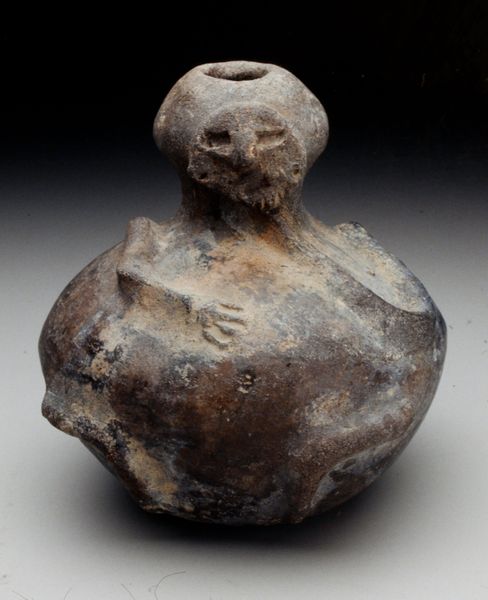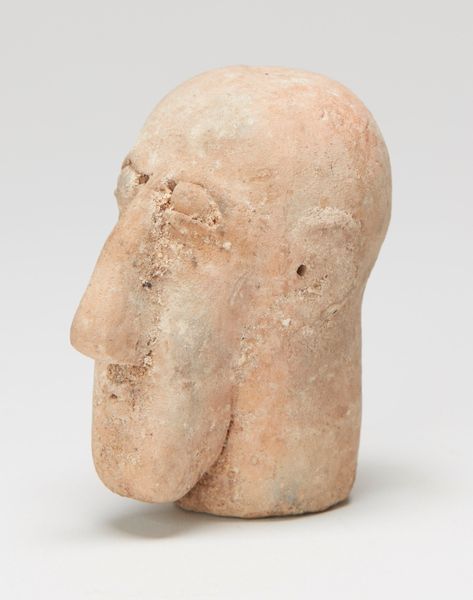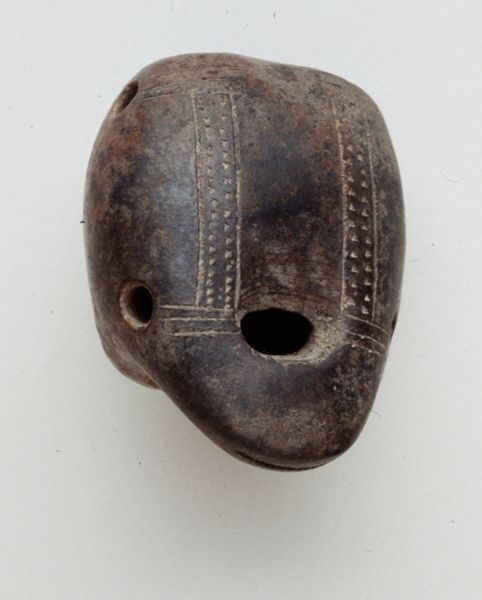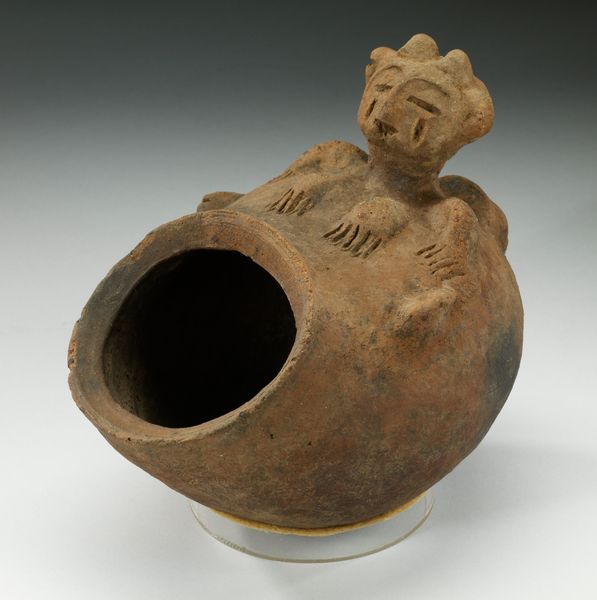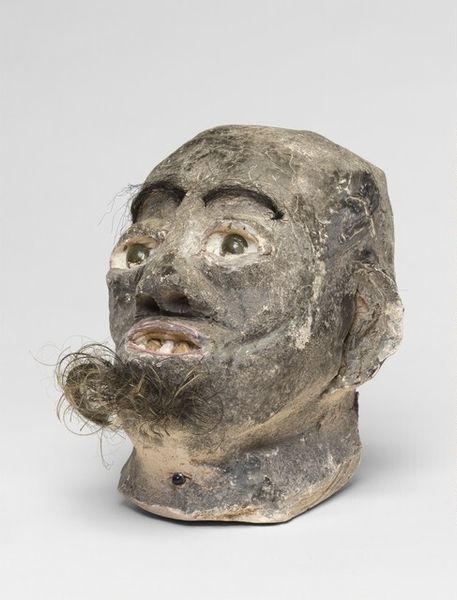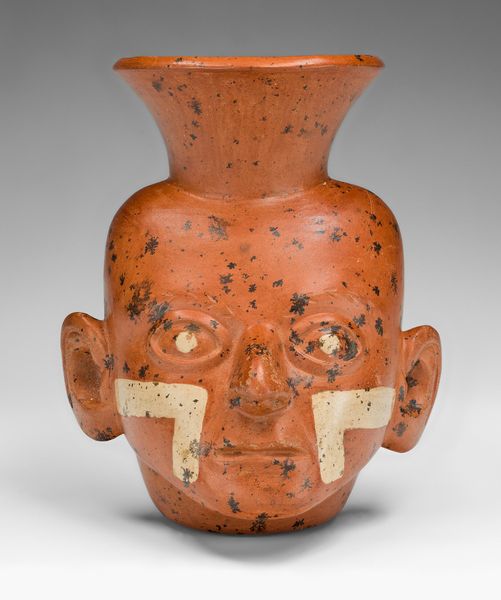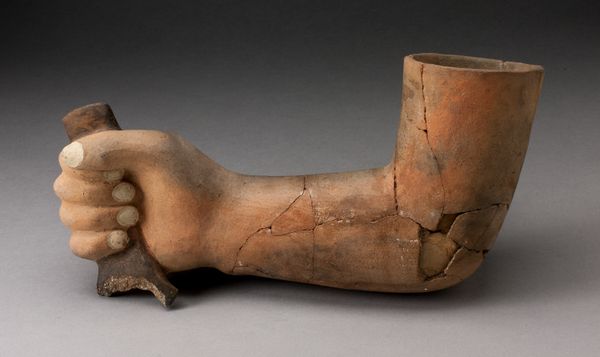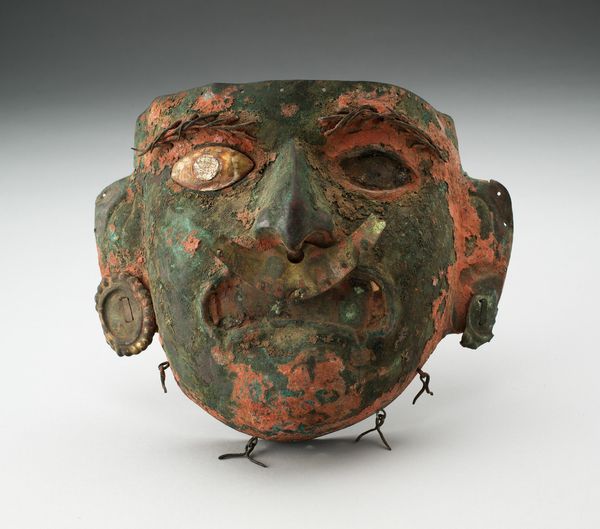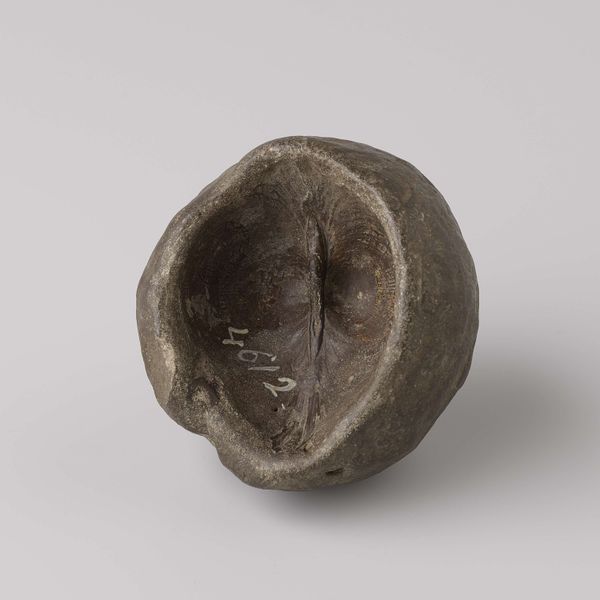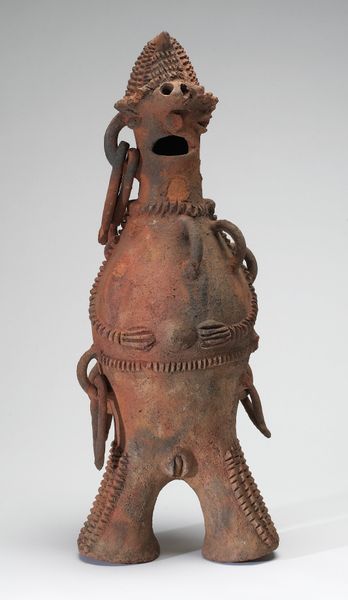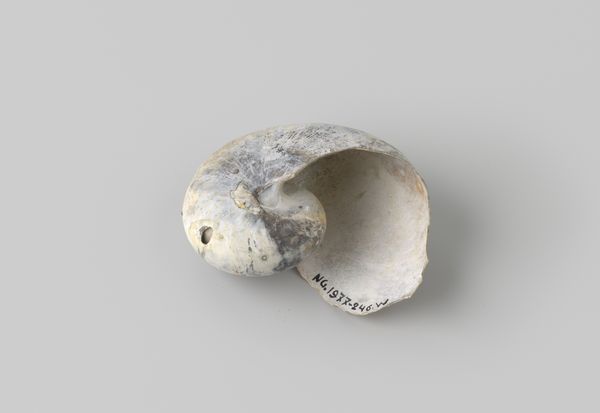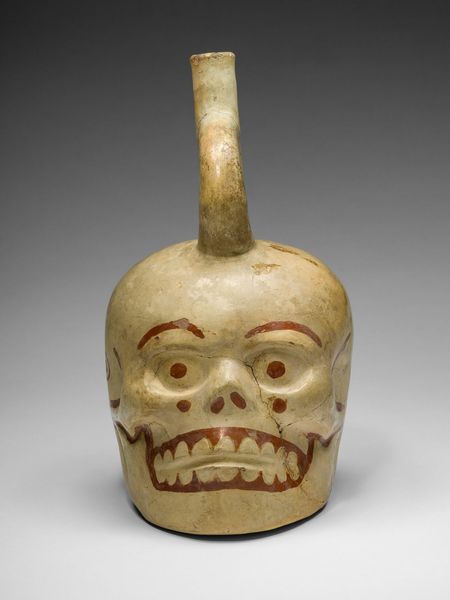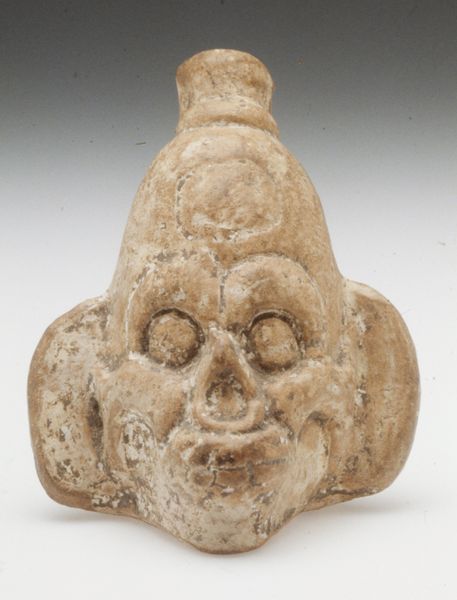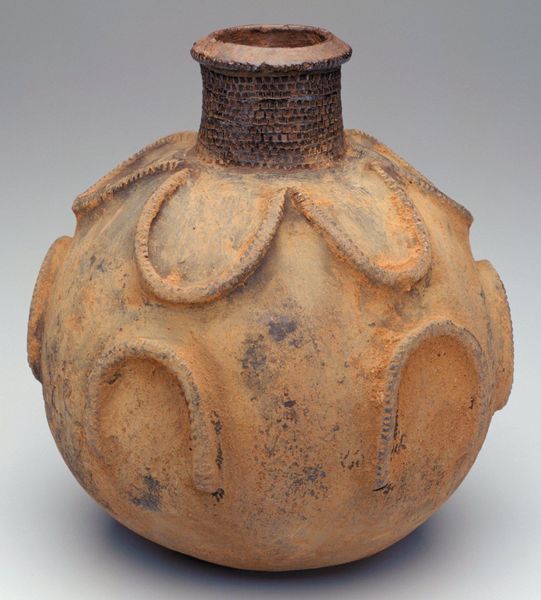
ceramic, terracotta
#
ceramic
#
terracotta
#
indigenous-americas
Dimensions: 10 5/16 x 13 1/2 x 12 1/4 in. (26.19 x 34.29 x 31.12 cm)
Copyright: Public Domain
Curator: What a wonderfully unassuming object. This is a Hopi water bottle, dating from around the 19th century. It's currently held in the collection of the Minneapolis Institute of Art. Editor: My initial reaction is pure admiration for its form. It's so utilitarian, almost elemental in its simplicity. It’s essentially a reddish-clay sphere! You can also observe subtle variations and wear on the ceramic material itself. Curator: And its simplicity speaks volumes, doesn't it? Hopi ceramics are so interesting. Historically, Hopi pottery has been deeply connected to ritual practices and everyday life. Water, naturally, is essential in the arid landscape they inhabit, so creating a durable vessel like this was incredibly important. It connects to survival and social practice in a very meaningful way. Editor: Absolutely, and when you look at it through the lens of labor and materials, you have to consider what that clay represented to the Hopi. How was it gathered, processed, shaped? It's not just an aesthetic object; it's the end result of a relationship with the land and very physical engagement with that substance. The smooth round surface of the main chamber appears intentionally contrasted by the jutting cylindrical features around the mouth and handle fixtures. This all served some very particular and deliberate design consideration. Curator: Precisely. Though unadorned in the sense that it lacks elaborate painted designs common in some other Southwestern ceramics, the form itself reflects a cultural aesthetic and knowledge base. Who was taught this particular crafting tradition, and in what context? That sort of knowledge formed a social and artistic framework. Also, its eventual place in a museum, shifting from functional object to art object… that's quite the transition. Editor: The shift highlights how we, as viewers, tend to sanitize these objects, divorced from their material origins. To truly understand this water bottle, we have to acknowledge the hands that shaped it, the earth from which it came, and its ultimate purpose beyond mere display. What stories has this ceramic experienced that we may never learn about it? Curator: A crucial point, underscoring how objects like this serve as powerful reminders of the intricate web connecting culture, necessity, and artistry. It carries water, yes, but it also carries history. Editor: Agreed, looking at it now I find that the history almost quenches my curiosity more than it once would have had the bottle still held water!
Comments
No comments
Be the first to comment and join the conversation on the ultimate creative platform.
